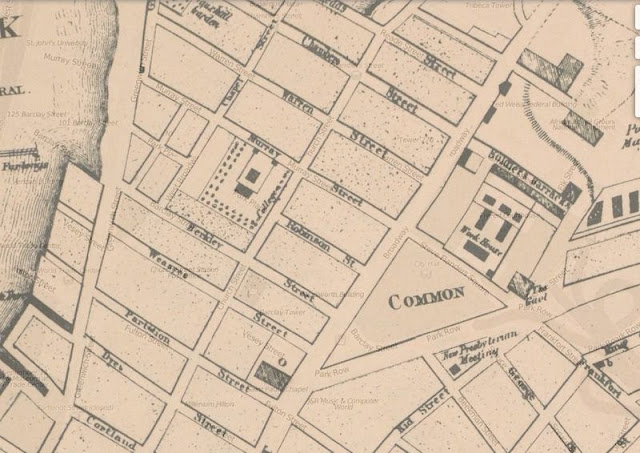Across the street, construction of the 35-story condominium building continues.
Progress since the earlier posts might seem slow but we can testify that loud construction activity is a daily activity. (Earlier blog posts,11/17/2015 and 2/29/2016.)
The noise of jackhammers and air horns is something our senses and brains have learned to ignore. In fact, during our hiatus away from NYC, we found the peace and quiet a bit overwhelming, especially at night. How is person expected to fall asleep without the din of car horns and sirens in the background?
Before leaving NYC in late April, the bottom of the building that sits on rock was taking shape. A concrete layer was poured directly on top of the Manhattan schist. Next, on top of the concrete layer, a honeycomb of steel rebar was placed to create the inner guts of a strong basement floor.
Since returning to NYC, we noticed that the basement floor had been poured. Now, the underground walls of the building are slowly taking shape. Where once there was a rock-strewn hole in the ground, there is now a basement floor and forms for pouring concrete walls. That's right. After months of digging into the Manhattan schist, the slow rise upward has begun. In other words, this newest East Side building is movin' on up.
Take a look.
Progress since the earlier posts might seem slow but we can testify that loud construction activity is a daily activity. (Earlier blog posts,11/17/2015 and 2/29/2016.)
The noise of jackhammers and air horns is something our senses and brains have learned to ignore. In fact, during our hiatus away from NYC, we found the peace and quiet a bit overwhelming, especially at night. How is person expected to fall asleep without the din of car horns and sirens in the background?
Before leaving NYC in late April, the bottom of the building that sits on rock was taking shape. A concrete layer was poured directly on top of the Manhattan schist. Next, on top of the concrete layer, a honeycomb of steel rebar was placed to create the inner guts of a strong basement floor.
Since returning to NYC, we noticed that the basement floor had been poured. Now, the underground walls of the building are slowly taking shape. Where once there was a rock-strewn hole in the ground, there is now a basement floor and forms for pouring concrete walls. That's right. After months of digging into the Manhattan schist, the slow rise upward has begun. In other words, this newest East Side building is movin' on up.
Take a look.
| 200 East 59th Street, NYC (4/22/2016) (rebar placed before pouring the basement floor) |
| 200 East 59th Street, NYC (5/23/2016) (basement floor already poured, basement walls taking shape) |








